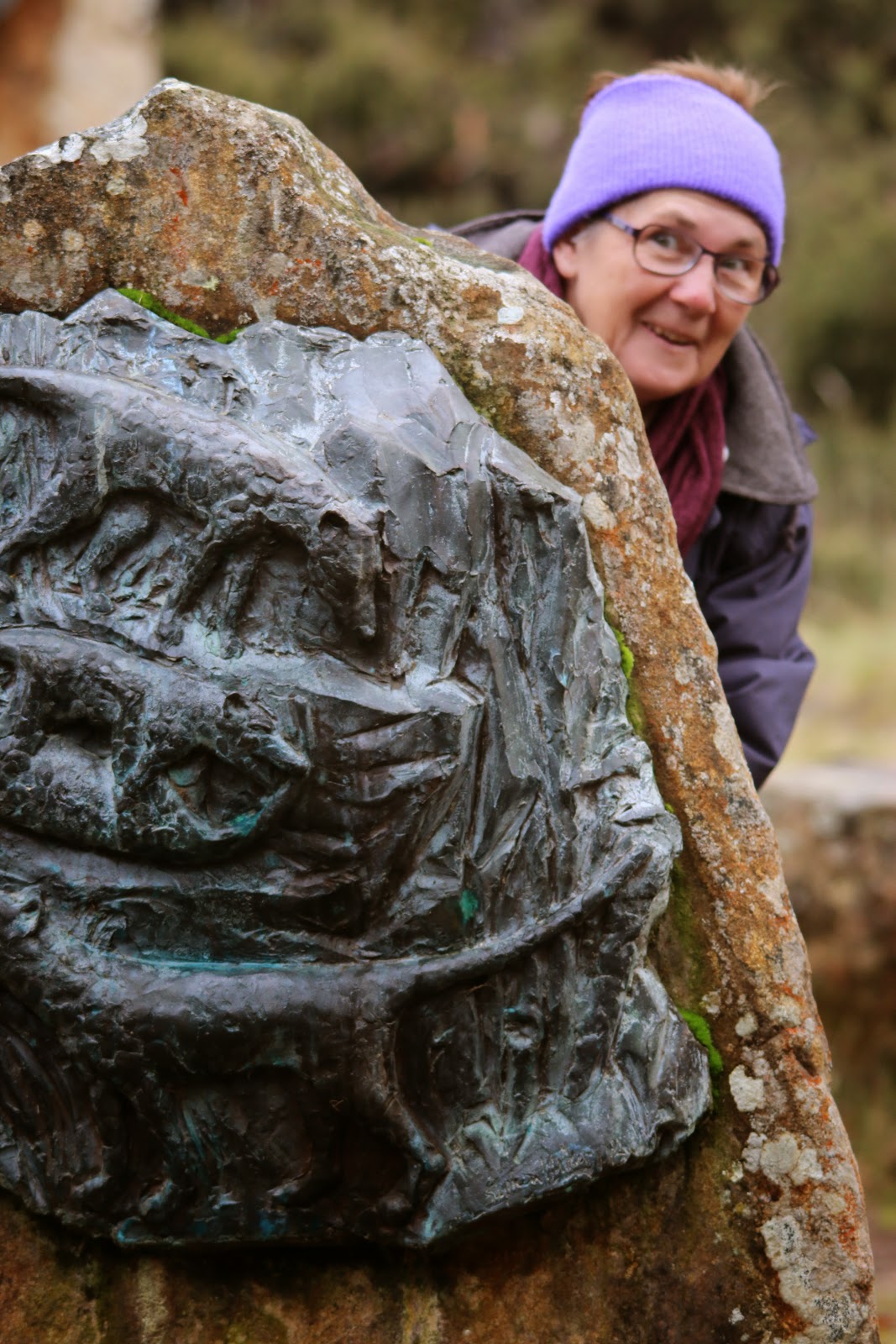 |
| Sunset reflections |
Survived the cold and decided staying an extra night was not such a bad decision after all. The cottage was quite cosy once the fire was stoked. The views were stunning, and we witnessed the most beautiful sunset and sunrise that we had ever seen.
 |
| Cloud formations at sunset |
 |
| Such a beautiful sky. |
 |
| So beautiful - worth the cold! |
 |
| Sunrise over the fields |
 |
| Early morning fog |
With such beautiful early morning views to motivate us we decided our first full day in the area would be spent discovering some of the history surrounding this beautiful region.
 |
| Early morning view from cottage |
 |
| Drive leading to cottage |
 |
| Fog rising over the river |
First stop - the local bakery - strange but true as this is actually where the local Information Centre is located. Well, actually this is where visitors can collect brochures and flyers for local attractions, including detailed self-guided walking tours for Longford and Perth.
Next stop - the village of Perth. So many of the buildings in this village are either National Trust classified or registered. The area on the banks of the South Esk River was selected and named by Governor Macquarie in 1821. By 1834 there were two hotels and eight houses and the first school was under construction. On our self-guided walking tour we passed by some very interesting cottages which were originally occupied by the mounted police force in early days of settlement; several churches and pubs, including the Leather Bottell Inn named for an old inn in Cobham, Kent (frequented by Charles Dickens) and built around 1830 as a small stone cottage. This latter building is now an antique shop but in its past life it was operated by a number of lessees and earned a dubious reputation before it was run as the local post office, then a men's shop, a private boarding house, a private residence, and a licensed restaurant - what amazing stories this building could tell!
Incorporated into the history walk around Perth is a beautiful walk along the banks of the South Esk River which is spanned by the Perth bridge. The original bridge was erected in 1836 with convict labour and was the first bluestone bridge built in Tasmania. Unfortunately that bridge was destroyed by the 1929 floods. It was rebuilt in 1931 but was again washed away in the floods of 1971. Prior to the original bridge being built the only link between the north and south areas of the island was by sea and later by a punt across the South Esk River.
 |
| So warm inside. |
 |
| Muffins to die for! |
History lesson over the OGO started to complain his hands and feet were now completely numb so maybe it was time for a warming coffee. Mrs OGO had already sussed out a great little coffee place in an old church built in 1838- the oldest church building in Perth. It was so cold outside that when we entered the coffee lounge not only did Mrs OGO's glasses fog up but both cameras lenses fogged over - certainly warmer inside - and the freshly baked muffin and clotted cream was to die for!!!!
 |
| Sorry couldn't wait for fog to clear |
 |
| That was deeeeelish |
After such a delicious coffee break we headed back to the cottage, once again stopping in the village of Longford to purchase some staple items - and Mrs OGO was desperately seeking some soothing bubble bath to enjoy a soak in the claw foot bath at the cottage - no such luck - it would appear that taking a bath is not a favourite pastime in this region! Oh, well it will just have to be bubbly in front of the fire instead of bubbles in the bath.
 |
| Our cosy convict cottage |

























